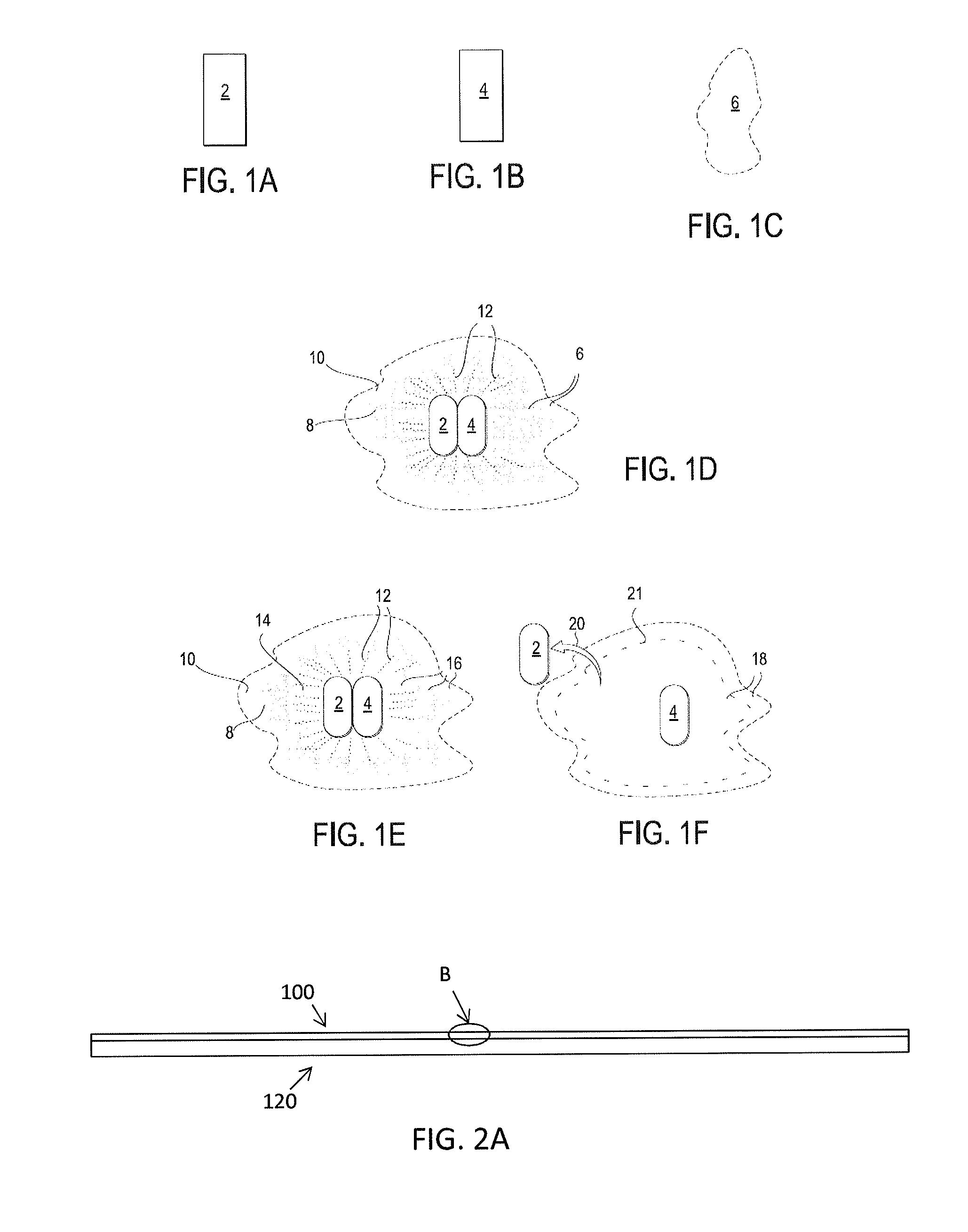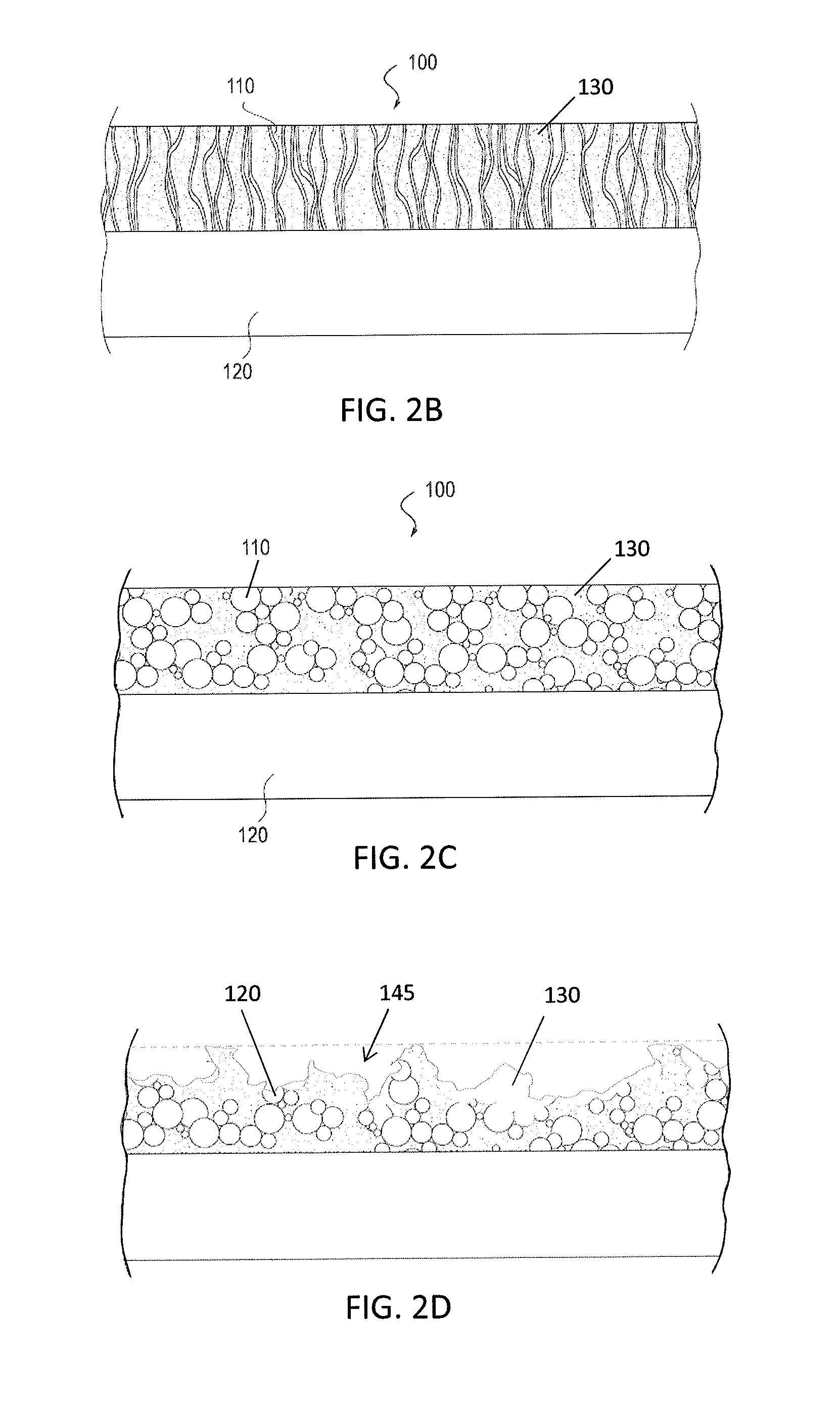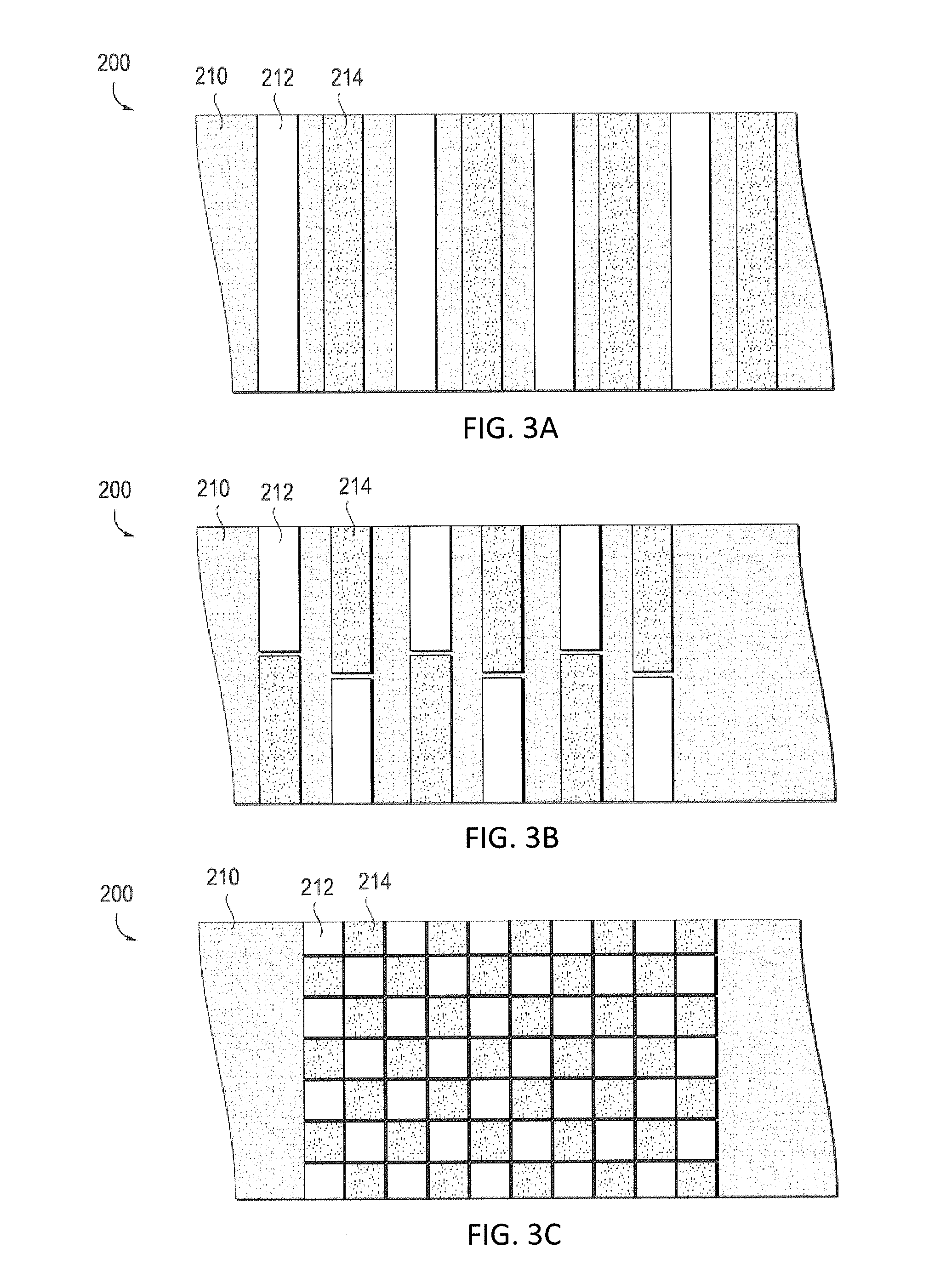Bioabsorbable substrates and systems that controllably release antimicrobial metal ions
a bioabsorbable substrate and metal ion coating technology, which is applied in biocide, prosthesis, surgery, etc., can solve the problems of limited use of silver-releasing implants, limited treatment and/or prevention of infection, and low knowledge of how to control the amount and distribution of silver-releasing implants, so as to enhance the release of silver and/or copper and/or zinc ions, the effect of maintaining flexibility
- Summary
- Abstract
- Description
- Claims
- Application Information
AI Technical Summary
Benefits of technology
Problems solved by technology
Method used
Image
Examples
Embodiment Construction
[0076]In general, described herein are apparatuses (e.g., systems and devices) that include a bioabsorbable substrate and that galvanically release antimicrobial ions over an extended period of time. The bioabsorbable substrate may degrade during the same period that the antimicrobial ions are being released (e.g., days, months, years). In general the bioabsorbable substrate is coated with a combination of anodic metal, such as silver and / or zinc and / or copper, and a cathodic metal, such as palladium, platinum, gold, molybdenum, titanium, iridium, osmium, niobium and rhenium, where the anodic metal and cathodic metals are co-deposited (e.g., by vapor deposition) so that the anodic metal is exposed to an outer surface of the coating and not fully encapsulated in the cathodic metal, and there is sufficient cathodic metal to drive the galvanic release of anodic ions when implanted into the body (e.g., when exposed to body regions containing bodily fluids such as blood, lymph, etc.).
[00...
PUM
| Property | Measurement | Unit |
|---|---|---|
| concentration | aaaaa | aaaaa |
| sizes | aaaaa | aaaaa |
| sizes | aaaaa | aaaaa |
Abstract
Description
Claims
Application Information
 Login to View More
Login to View More - Generate Ideas
- Intellectual Property
- Life Sciences
- Materials
- Tech Scout
- Unparalleled Data Quality
- Higher Quality Content
- 60% Fewer Hallucinations
Browse by: Latest US Patents, China's latest patents, Technical Efficacy Thesaurus, Application Domain, Technology Topic, Popular Technical Reports.
© 2025 PatSnap. All rights reserved.Legal|Privacy policy|Modern Slavery Act Transparency Statement|Sitemap|About US| Contact US: help@patsnap.com



